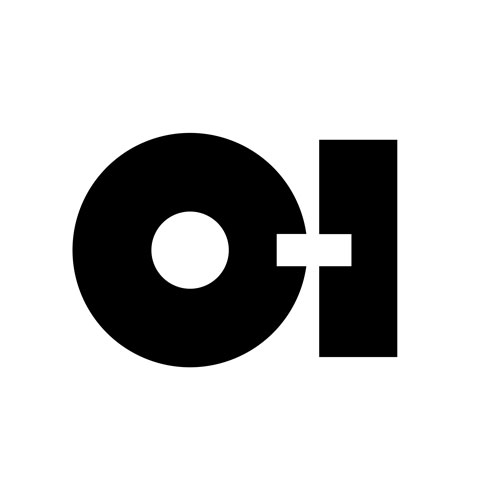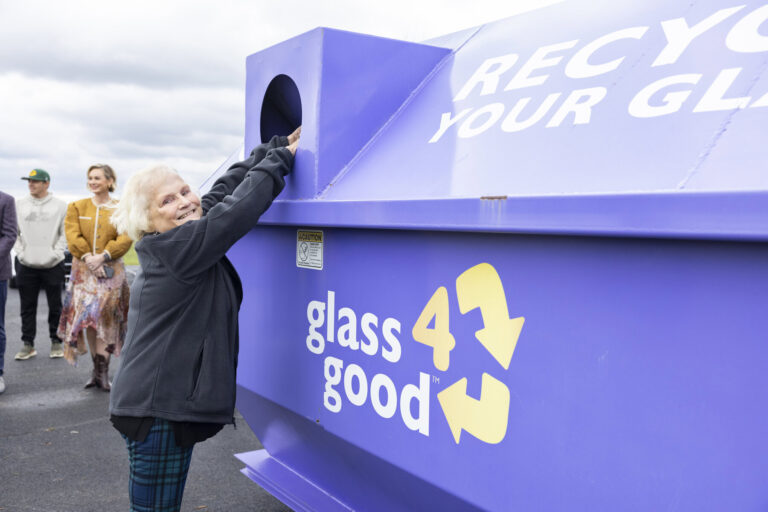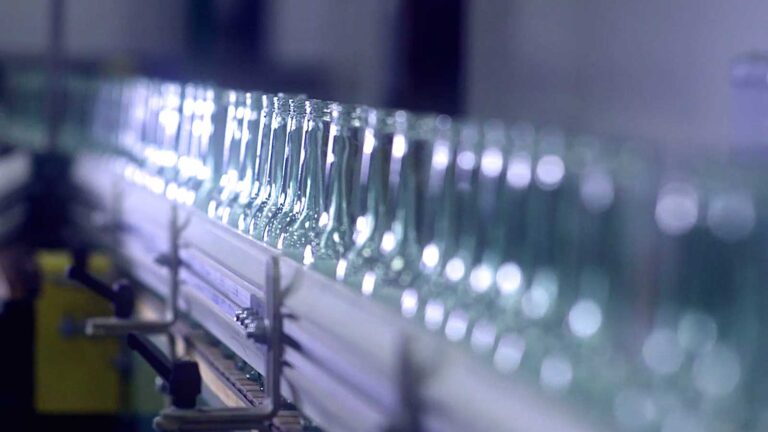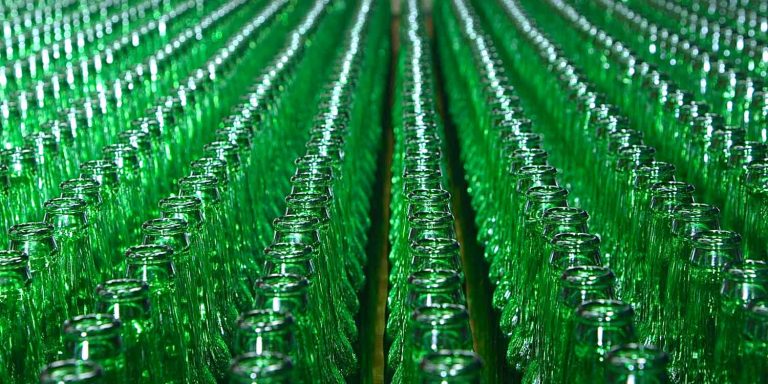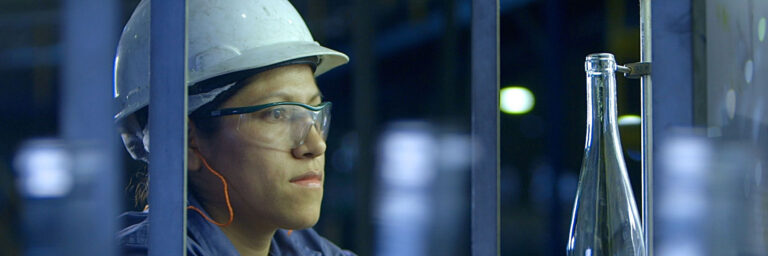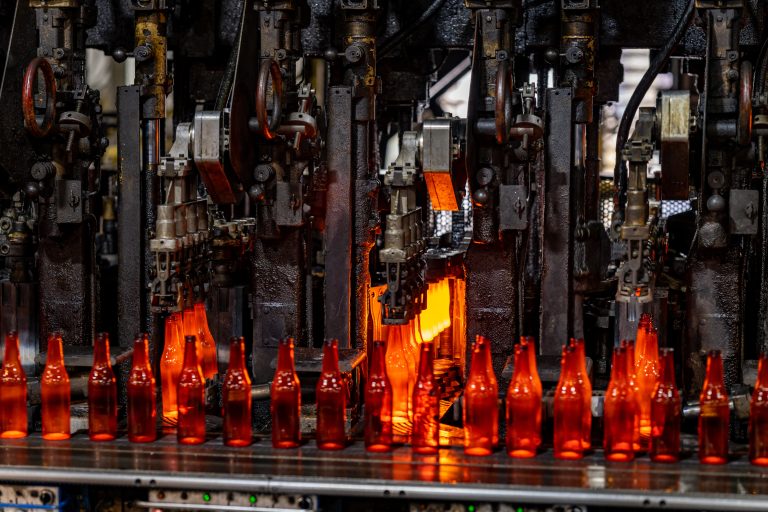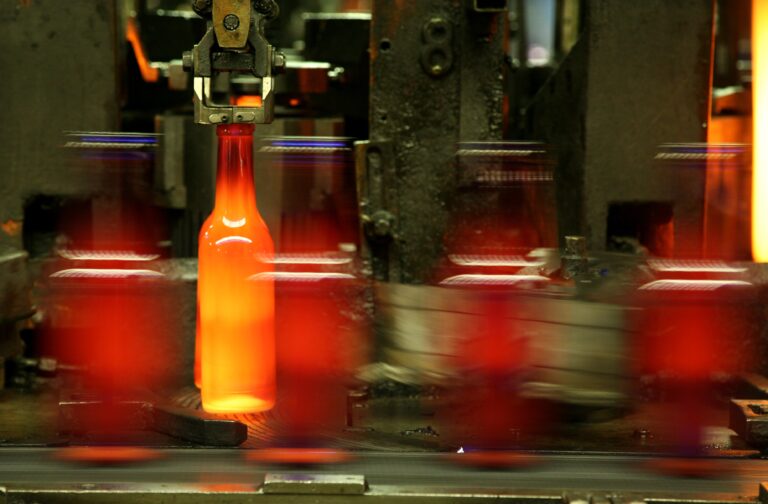PERRYSBURG, Ohio, April 28, 2020 (GLOBE NEWSWIRE) — FOR IMMEDIATE RELEASE
O-I Glass, Inc. (NYSE: OI) today reported financial results for the first quarter ended March 31, 2020.
“As described in our preliminary earnings release update, O-I’s first quarter performance was solid. Results benefited from favorable price and mix as well as good cost performance. At the same time, shipment levels were slightly below prior year reflecting the initial impact of the COVID-19 pandemic and the volume pressures have continued in April. Consistent with our focus on cash generation, cash flows compared favorably to the same period in the prior year and liquidity was strong at the end of the first quarter,” said Andres Lopez, CEO.
“We are pleased with the improvement in our operating performance given progress on our turnaround initiatives that benefited both the top and bottom line. I am confident these improvements will be sustained. To mitigate the impact of COVID-19, we are taking preemptive measures to reduce costs and improve cash generation including suspension of the company’s dividend. At the same time, we remain focused on creating long-term value by executing on our turnaround initiatives and advancing MAGMA,” concluded Lopez.
Comments
- Reported Earnings: For the first quarter of 2020, the company recorded net earnings attributable to the company of $0.32 per share, compared with earnings of $0.51 per share (diluted) in the prior year period.
- Adjusted Earnings Were Consistent with Guidance: Excluding certain items management considers not representative of ongoing operations, first quarter 2020 adjusted earnings1 were $0.41 per share, compared with the prior year of $0.51 per share. Current quarter results were consistent with the company’s guidance of $0.40 – $0.45 per share.
- Solid First Quarter Performance: First quarter 2020 earnings benefited from improved price and mix as well as good operating cost improvement both driven by the company’s turnaround initiatives. Shipments in tons declined approximately 0.8 percent from the prior year which compared to management’s guidance of flat to up two percent. Shipment trends reflect the benefit of the recent Nueva Fanal acquisition which was more than offset by slightly lower organic sales and the initial impact of COVID-19. The company estimates the pandemic negatively impacted first quarter sales volumes by 1.7 percent primarily in March. Compared to expectations heading into the quarter, the combined impact of a stronger U.S. dollar and a higher effective tax rate represented a $0.04 earnings headwind compared to guidance.
- Favorable Cash Flows Compared to Prior Year: The first quarter is typically a seasonal use of cash for the business. Cash utilized in continuing operating activities was $315 million in the first quarter of 2020 compared to a $595 million in the prior year. Free cash flow1 was a $435 million use of cash compared to a $716 million use of cash in the first quarter of 2019.
- Strong Liquidity: O-I maintained $1.7 billion of total committed liquidity, including nearly $900 million cash-on-hand as well as undrawn availability on committed lines of credit, at the end of the first quarter and has no debt maturities until March 2021. Liquidity has remained strong through April 2020.
- Business Conditions Remain Fluid: Many governments have implemented new rules and guidelines to combat the virus that restrict business activity. Fortunately, the manufacture of glass containers has been largely viewed as essential to the important food and beverage value chain in the countries in which we operate. However, we are still impacted by the broader supply chain issues and in some cases certain end use categories that we serve are not deemed essential. Reflecting the challenges with the COVID-19 pandemic, O-I’s shipment in tons during the last two weeks of March were down 7 percent overall, with the most significant reductions in Latin America where government restrictions have been most stringent and Europe. The company has temporarily curtailed some capacity to adapt to revised customer demand and comply with governmental public health decrees in certain countries. Shipments have been unfavorably impacted in April primarily driven by government restrictions but should improve as markets reopen.
- Navigating COVID-19 With Agility: As previously noted, O-I continues to implement measures to protect the health and safety of all employees in alignment with the recommendations put forth by the World Health Organization, U.S. Centers for Disease Control and Prevention, or other local authorities based on location. Fortunately, the benefit of O-I’s turnaround initiatives has exceeded expectations and the company is moving with agility to balance supply with evolving demand trends which remain fluid.
- Actions to Mitigate Impact of Pandemic: In response to the unprecedented nature of the pandemic, the company is taking a number of preemptive measures to reduce costs and preserve O-I’s financial flexibility. Cash generation is the top financial priority and the company is taking actions to quickly align supply with evolving demand trends as well as closely managing working capital levels. 2020 capital expenditures should approximate $300 million or lower. In addition to an expanded SG&A reduction initiative, the company is implementing a program to temporarily reduce salaries for certain executive officers, including the CEO, and Board fees by up to 25 percent with future repayment subject to achieving certain goals. The company will also temporarily defer up to 15 percent of other salaried employees’ base pay during 2020. Furthermore, the company is suspending its dividend and is pausing the share repurchase program. The status of these efforts will be reviewed regularly, but the company anticipates these measures will continue through 2020.
- Focus on Long-Term Value Creation: Despite headwinds from the pandemic, the company continues to focus on long-term value creation including its turnaround initiatives, footprint optimization efforts, MAGMA deployment and resolution of legacy asbestos liabilities. In light of COVID-19, for the time being the company has halted the strategic review of its Australia and New Zealand (“ANZ”) business and will continue to run the operations which is performing well. As market conditions stabilize, the company will reevaluate alternatives for ANZ. The company’s tactical divestiture program continues to advance, but at a slower than anticipated pace.
- Earnings Guidance: Due to the significant uncertainty related to the pandemic, the company withdrew its full year 2020 guidance and does not plan to provide updated quarterly or yearly guidance until market trends become more clear. The company is operating with a set of financial principles that prioritize liquidity, maximizing free cash flow and debt reduction during the pandemic.
First Quarter 2020 Results
First quarter 2020 net sales were $1.56 billion compared with $1.64 billion in the prior year. Higher selling prices increased revenue $19 million. However, lower shipments negatively impacted sales by $20 million as sales volume in tons declined 0.8 percent. Sales volumes reflected the net effect of a 1.7 percent decline due to COVID-19, a 1.1 percent decline in organic sales volumes and a 2.0 percent benefit from Nueva Fanal. Unfavorable foreign currency translation reduced net sales by $75 million compared to 2019.
Segment operating profit1 was $169 million in the first quarter of 2020, compared with $200 million in the prior year period. Profits were unfavorably impacted by $13 million attributable to unfavorable foreign currency translation and $15 million due to temporary items that benefited 2019 but did not repeat in 2020.
- Americas: Segment operating profit in the Americas was $103 million in the first quarter of 2020 compared with $113 million in the prior year period. Results benefited from improved operating performance due to turnaround initiatives while cost inflation more than offset higher selling prices. Total sales volume in tons declined 1 percent as additional shipments attributed to the Nueva Fanal acquisition in mid-2019 were more than offset by a decline in volumes linked to COVID-19 and the continued decline in the North America beer category. Results were also unfavorably impacted $6 million by foreign currency translation.
- Europe: Segment operating profit in Europe was $61 million in the first quarter of 2020 compared with $79 million in the prior year period. Results benefited from higher selling prices (net of cost inflation) and improved operating performance while shipments in tons declined 2 percent primarily due to COVID-19. Results were also unfavorably impacted $4 million by foreign currency translation and $15 million due to temporary items that benefited 2019, but did not repeat in 2020, including energy credits and incentives.
- Asia Pacific: Segment operating profit in Asia Pacific was $5 million in the first quarter of 2020 compared with $8 million in the prior year period. Shipments in tons increased 7 percent while earnings were impacted by lower selling prices (net of cost inflation). Results also reflected $3 million of unfavorable foreign currency translation.
Retained corporate and other costs were $21 million in the first quarter of 2020 compared with $24 million in the prior year period. Net interest expense was $53 million in 2020, down from $65 million in 2019 due to recent refinancing activities. The company’s effective tax rate was 32.1 percent compared to 24.3 percent in the prior year. Excluding certain items that management does not consider representative of ongoing operations, the effective tax rate was 27.6 percent, which was higher than 24.5 percent in the prior year primarily reflecting shifts in regional earnings mix as well as recent regulatory changes in certain markets.
During the first quarter of 2020, the company de-consolidated its direct, wholly owned subsidiary Paddock Enterprises LLC (“Paddock”) as of January 6, 2020, the day Paddock filed for Chapter 11 relief. As a result of the de-consolidation, O-I recorded a $14 million pre-tax charge which is excluded from adjusted earnings.
Cash utilized in operating activities was $315 million in the first quarter of 2020 and $595 million in the prior year period. Free cash flow was a $435 million use of cash in 2020 and $716 million in 2019. Favorable cash utilized in operating activities and free cash flow compared to the prior year included the benefit of lower working capital levels primarily due to increased utilization of accounts receivable factoring programs and the staying of all asbestos related payments as a result of Paddock filing for bankruptcy in early January.
Total debt was $6.4 billion at March 31, 2020 compared to $5.9 billion at March 31, 2019. Net debt2 was $5.5 billion compared to $5.6 billion in the prior year. At the end of the first quarter, O-I maintained approximately $1.7 billion in total committed liquidity including nearly $900 million cash-on-hand as well as undrawn availability on committed lines of credit. In March, the company borrowed approximately $600 million on its $1.5 billion revolving credit facility to bolster cash-on-hand as a proactive measure to ensure financial flexibility.
The company is actively monitoring the impact of the COVID-19 outbreak, which will negatively impact its business and results of operations for the second quarter of 2020 and likely beyond. The extent to which the company’s operations will be impacted by the outbreak will depend largely on future developments, which are highly uncertain and cannot be accurately predicted, including new information which may emerge concerning the severity of the outbreak and actions by government authorities to contain the outbreak or treat its impact, among other things.
Conference Call Scheduled for April 29, 2020
O-I Glass CEO Andres Lopez and CFO John Haudrich will conduct a conference call to discuss the company’s latest results on Wednesday, April 29, 2020, at 8:00 a.m. EDT. A live webcast of the conference call, including presentation materials, will be available on the O-I website, www.o-i.com/investors, in the Webcasts and Presentations section.
The conference call also may be accessed by dialing 888-733-1701 (U.S. and Canada) or 706-634-4943 (international) by 7:50 a.m. EDT, on April 29, 2020. Ask for the O-I conference call. A replay of the call will be available on the O-I website, www.o-i.com/investors, for a year following the call.
Contact: Sasha Sekpeh, 567-336-5128 – O-I Investor Relations
O-I news releases are available on the O-I website at www.o-i.com.
O-I’s second quarter 2020 earnings conference call is currently scheduled for Wednesday, August 5, 2020, at 8:00 a.m. EDT.
About O-I Glass
At O-I Glass, Inc. (NYSE: OI), we love glass and we’re proud to make more of it than any other glass bottle or jar producer in the world. We love that it’s beautiful, pure and completely recyclable. With global headquarters in Perrysburg, Ohio, we are the preferred partner for many of the world’s leading food and beverage brands. Working hand and hand with our customers, we give our passion and expertise to make their bottles iconic and help build their brands around the world. With more than 27,500 people at 78 plants in 23 countries, O-I has a global impact, achieving revenues of $6.7 billion in 2019. For more information, visit o-i.com.
Non-GAAP Financial Measures
The company uses certain non-GAAP financial measures, which are measures of its historical or future financial performance that are not calculated and presented in accordance with GAAP, within the meaning of applicable SEC rules. Management believes that its presentation and use of certain non-GAAP financial measures, including adjusted earnings, adjusted earnings per share, segment operating profit, net debt, and free cash flow, provide relevant and useful supplemental financial information, which is widely used by analysts and investors, as well as by management in assessing both consolidated and business unit performance. These non-GAAP measures are reconciled to the most directly comparable GAAP measures and should be considered supplemental in nature and should not be considered in isolation or be construed as being more important than comparable GAAP measures.
Adjusted earnings relates to net earnings from continuing operations attributable to the company, exclusive of items management considers not representative of ongoing operations because such items are not reflective of the company’s principal business activity, which is glass container production. Adjusted earnings are divided by weighted average shares outstanding (diluted) to derive adjusted earnings per share. Segment operating profit relates to earnings from continuing operations before interest expense (net), and before income taxes and is also exclusive of items management considers not representative of ongoing operations as well as certain retained corporate cost. Net Debt is defined as gross debt less cash. Management uses adjusted earnings, adjusted earnings per share, segment operating profit, segment operating profit margin and net debt to evaluate its period-over-period operating performance because it believes this provides a useful supplemental measure of the results of operations of its principal business activity by excluding items that are not reflective of such operations. Adjusted earnings, adjusted earnings per share, segment operating profit, and net debt may be useful to investors in evaluating the underlying operating performance of the company’s business as these measures eliminate items that are not reflective of its principal business activity.
Further, free cash flow relates to cash provided by continuing operating activities less additions to property, plant and equipment. Management has historically used free cash flow to evaluate its period-over-period cash generation performance because it believes this has provided a useful supplemental measure related to its principal business activity. Free cash flow may be useful to investors to assist in understanding the comparability of cash flows generated by the company’s principal business activity. It should not be inferred that the entire free cash flow amount is available for discretionary expenditures, since the company has mandatory debt service requirements and other non-discretionary expenditures that are not deducted from the measure. Management uses non-GAAP information principally for internal reporting, forecasting, budgeting and calculating compensation payments.
The company routinely posts important information on its website – www.o-i.com/investors.
Forward-Looking Statements
This press release contains “forward-looking” statements related to O-I Glass, Inc. (“O-I Glass” or the “company”) within the meaning of Section 21E of the Securities Exchange Act of 1934, as amended (the “Exchange Act”) and Section 27A of the Securities Act of 1933. Forward-looking statements reflect the company’s current expectations and projections about future events at the time, and thus involve uncertainty and risk. The words “believe,” “expect,” “anticipate,” “will,” “could,” “would,” “should,” “may,” “plan,” “estimate,” “intend,” “predict,” “potential,” “continue,” and the negatives of these words and other similar expressions generally identify forward-looking statements.
It is possible that the company’s future financial performance may differ from expectations due to a variety of factors including, but not limited to the following: (1) the company’s ability to obtain the benefits it anticipates from the Corporate Modernization, (2) risks inherent in, and potentially adverse developments related to, the Chapter 11 bankruptcy proceeding involving Paddock, that could adversely affect the company and the company’s liquidity or results of operations, including the impact of deconsolidating Paddock from the company’s financials, risks from asbestos-related claimant representatives asserting claims against the company and potential for litigation and payment demands against us by such representatives and other third parties, (3) the amount that will be necessary to fully and finally resolve all of Paddock’s asbestos-related claims and the company’s obligations to make payments to resolve such claims under the terms of its support agreement with Paddock, (4) the company’s ability to manage its cost structure, including its success in implementing restructuring or other plans aimed at improving the company’s operating efficiency and working capital management, achieving cost savings, and remaining well-positioned to address the company’s legacy liabilities, (5) the company’s ability to acquire or divest businesses, acquire and expand plants, integrate operations of acquired businesses and achieve expected benefits from acquisitions, divestitures or expansions, (6) the company’s ability to achieve its strategic plan, (7) foreign currency fluctuations relative to the U.S. dollar, (8) changes in capital availability or cost, including interest rate fluctuations and the ability of the company to refinance debt at favorable terms, (9) the general political, economic and competitive conditions in markets and countries where the company has operations, including uncertainties related to Brexit, economic and social conditions, disruptions in the supply chain, competitive pricing pressures, inflation or deflation, changes in tax rates and laws, natural disasters and weather, (10) the impact of COVID-19 and the various governmental, industry and consumer actions related thereto, (11) the company’s ability to generate sufficient future cash flows to ensure the company’s goodwill is not impaired, (12) consumer preferences for alternative forms of packaging, (13) cost and availability of raw materials, labor, energy and transportation, (14) consolidation among competitors and customers, (15) unanticipated expenditures with respect to data privacy, environmental, safety and health laws, (16) unanticipated operational disruptions, including higher capital spending, (17) the company’s ability to further develop its sales, marketing and product development capabilities, (18) the failure of the company’s joint venture partners to meet their obligations or commit additional capital to the joint venture, (19) the ability of the company and the third parties on which it relies for information technology system support to prevent and detect security breaches related to cybersecurity and data privacy, (20) changes in U.S. trade policies, and the other risk factors discussed in the company’s Annual Report on Form 10-K for the year ended December 31, 2019 and any subsequently filed Annual Report on Form 10-K, Quarterly Reports on Form 10-Q or the company’s other filings with the Securities and Exchange Commission.
It is not possible to foresee or identify all such factors. Any forward-looking statements in this document are based on certain assumptions and analyses made by the company in light of its experience and perception of historical trends, current conditions, expected future developments, and other factors it believes are appropriate in the circumstances. Forward-looking statements are not a guarantee of future performance and actual results or developments may differ materially from expectations. While the company continually reviews trends and uncertainties affecting the company’s results or operations and financial condition, the company does not assume any obligation to update or supplement any particular forward-looking statements contained in this document.
1 Adjusted earnings per share, free cash flow and segment operating profit are each non-GAAP financial measures. See tables included in this release for reconciliations to the most directly comparable GAAP measures.
2 Net Debt is defined as Total Debt less Cash. See tables included in this release for reconciliations to the most directly comparable GAAP measures.
Attachments
For more information, contact:
Chris Manuel
Vice President of Investor Relations
567-336-2600
[email protected]
